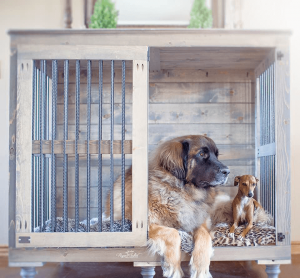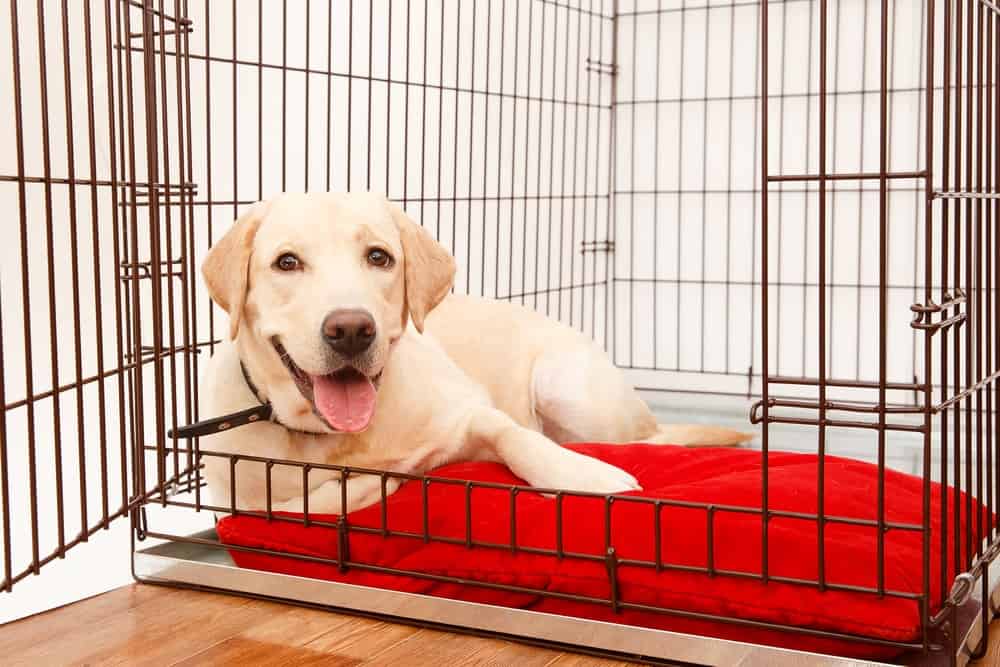Crate training is a topic that we could all use a bit more information on. To new Pet Parents, the idea can be a bit intimidating. For seasoned Owners, maybe it makes sense but you’re not sure how to get started. And to be honest, there are people who wonder whether crate training benefits their pooch in the first place.
Whatever your experience with crate training, we’re here to explain it all: its advantages, its challenges, and some tips to help the whole process run a bit smoother.

Image courtesy of This Dog’s Life
Let’s start with the elephant in the room
There’s a common belief that crate training is cruel. Some critics of crate training say that it’s not humane to lock a dog in a cage. Others think that Owners who use crates simply care more about their belongings than the welfare of their dogs.
While those responses are understandable – after all, we couldn’t imagine being locked in a cage ourselves – they are a bit misguided. In fact, crate training actually takes the psychology of dogs into account. When done effectively, it can make training less stressful for your pet.
According to the RSPCA and the Humane Society, your dog associates a crate with the cozy caves of their ancestors. Giving them a dwelling that is quiet and safe supports their drive to live in an underground home.
This homey cave is a place that your dog won’t want to use as a bathroom or a playground. As such, crate training them can help them learn potty training more quickly as well as curb chewing behaviours.
Crate training also comes in handy when you need to keep your dog in a safe space during stressful situations, like after a trip to the vet. Plus, we all know the kinds of crazy things that dogs can do when we can’t give them our attention. A crate is simply another way to keep them safe.
What crates should never be used for is punishment. Sending a dog to the doghouse will only make a pooch associate the crate with all things bad. Even worse, they’ll become confused when you send them to the crate if they haven’t done anything wrong.
With that in mind, you can see why proper crate training can be positive for your pooch.
How can Pet Owners get started?
Crate training a puppy is ideal because it will allow your dog to associate a crate with safety at a young age. That said, it’s also possible to crate train an older dog, though you might have to do some extra coaxing.
Whether you have a Pup or a Pup-at-heart, here are a few tips to get you started:
Choose the right crate – you’re going to want something sturdy that won’t collapse and scare the doggo. A collapsable metal crate, for instance, is strong when it’s set up, and you can use it for vet trips. You’ll also want to choose a size that allows your dog to stand and turn around comfortably.
Find the best location – when you’re first starting out, you should place the crate in a room where your family spends lots of time. For this, the living room is a great option. During the first day or two, don’t do anything with the crate. Just allow your pooch to sniff it and grow accustomed to the sight of it.
Introduce food – as your dog gets comfortable with the presence of the crate, start tossing in treats. This will let you see if they’ll venture inside. At this stage, it’s helpful to tie the door open so it doesn’t swing into your dog and frighten them. When you see that they’re willing to climb inside, start serving all of their meals in the crate.
Don’t close the door just yet – as your dog becomes comfortable being in the crate, you’re going to start closing the door for a few seconds at a time, preferably while they’re eating. During these trials, always give your pooch plenty of love and treats.
Switch up the length of crate time – after a while, you’ll be able to keep your dog in the crate with the door closed for longer periods of time. But, remember, your pooch is a pretty skilled time-keeper, and if you get into a habit of taking them out at the same time every day, they’ll get anxious if you stray from that routine. It’s better that they’re not able to anticipate the amount of time they’ll be in the crate.
Troubleshooting crate training
Alright, the training process seems pretty straight-forward, but every dog has their own quirks and squirms, right? So what can you do if your dog absolutely hates the idea of the crate?
If your pooch seems to have a hard time at any of the steps, stay in that stage longer. For instance, if your dog is really afraid of the crate being in the living room, give them more time to get used to its presence before trying to feed them inside of it. If your dog becomes terrified when you close the door for one second, keep trying one second intervals and don’t move on to longer times until your dog is completely comfortable.
This might not be the exact answer that you want to hear, but the best remedy is to stick with it. With persistence and endless verbal encouragements, your pooch will eventually come around to the idea of being in the crate.
Remember that crates are beneficial to your pup and can make the entire training process more enjoyable for you both. Good luck!


2 comments
Crate training was the best thing I ever did for my timid puppy. It gave her a safe place to retreat when she was unsure, it helped with toilet training and gave her her own place where she feels safe and secure. Can’t recommend enough! Not every dogs needs it but crate training has had great benefits for our puppy!
Highly recommend crate training. Have used on my two girls aged 9 & 6 from puppy stage. Helps with toilet training and training in general. Also good for keeping your puppy safe for short periods when you can’t be with them constantly. It is their secure den which they love for quiet time or sleeping in when they were puppies and also to this day, nothing cruel about It. Also good for puppies/dogs to be comfortable in a crate as trips/stays at the vet are inevitable.